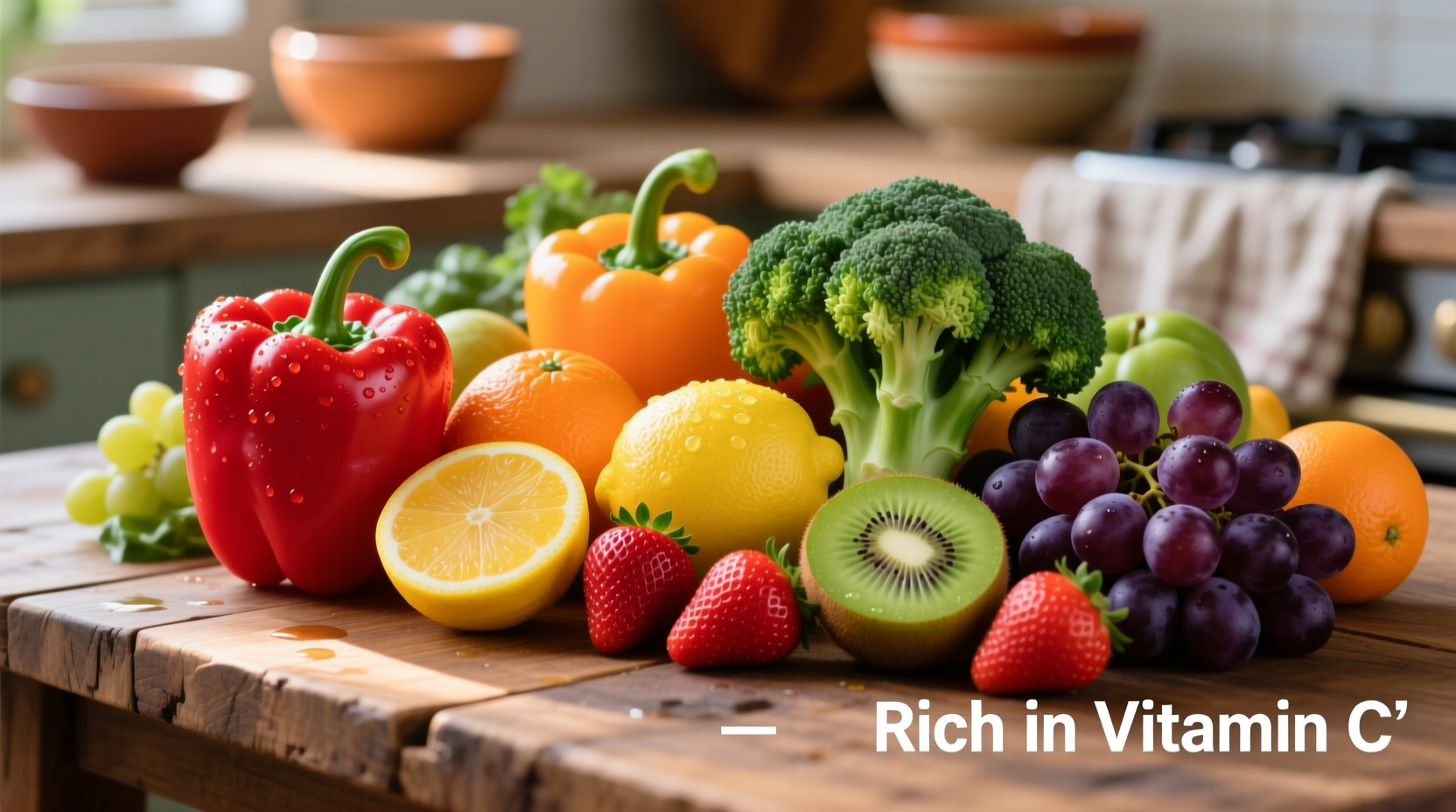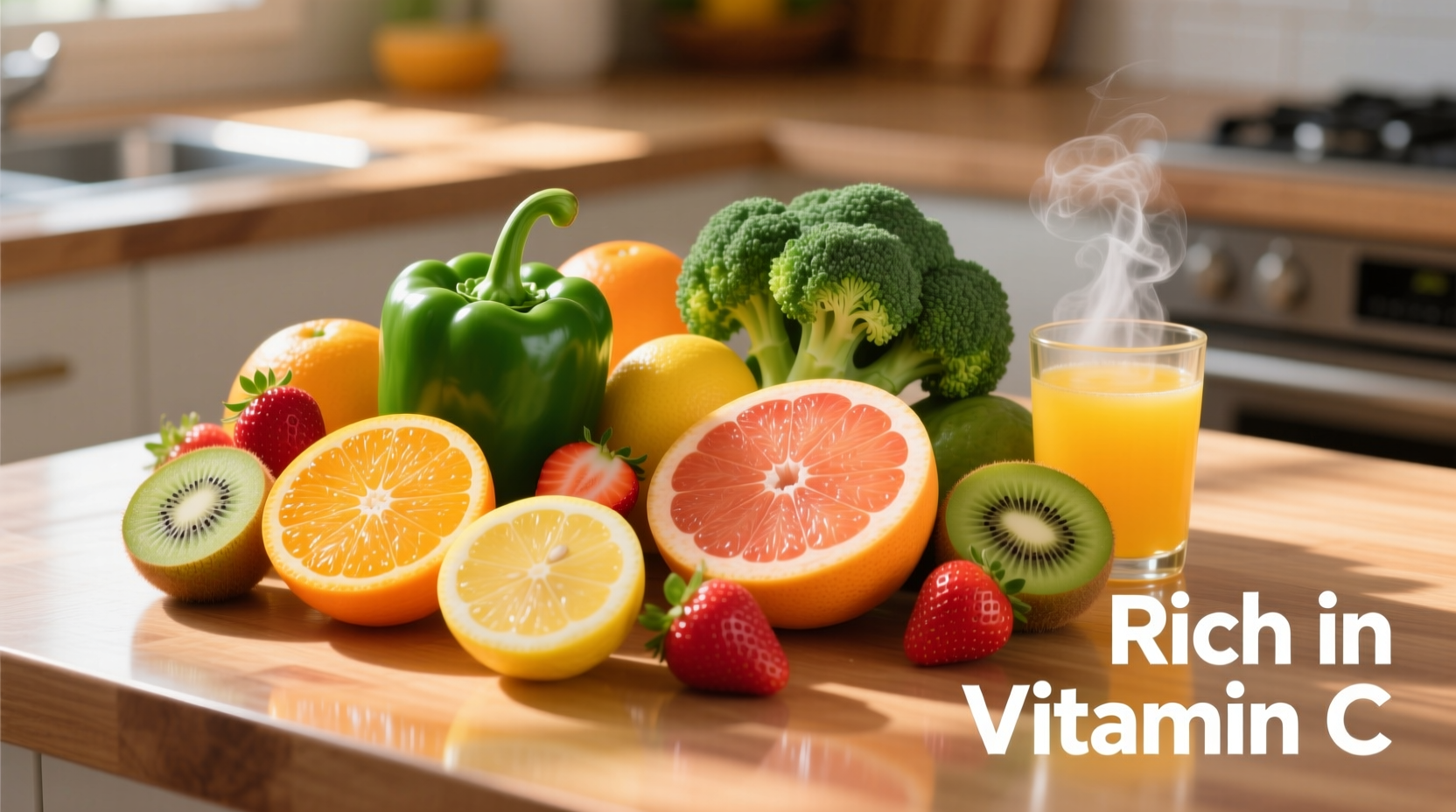The top natural food sources of vitamin C include guava (377mg per cup), bell peppers (190mg per cup), kiwi (167mg per cup), strawberries (98mg per cup), and oranges (96mg per cup). These vitamin C-rich foods provide essential immune support, collagen production, and antioxidant protection when consumed as part of a balanced diet.
Discover exactly which foods deliver the most vitamin C per serving and how to maximize your intake through smart food choices. This guide cuts through the confusion with scientifically verified data on natural vitamin C sources that actually work for your health.
Vitamin C Powerhouses: Nature's Immune Boosters
While oranges often steal the spotlight, numerous everyday foods contain even higher concentrations of vitamin C. Understanding which options deliver maximum nutritional value helps you make smarter dietary choices without relying on supplements. Vitamin C plays a critical role in immune function, skin health, and iron absorption—making it essential to identify the most potent natural sources.
Top Vitamin C Food Sources Ranked
Based on USDA National Nutrient Database measurements, these foods provide exceptional vitamin C content per standard serving. Remember that preparation methods significantly impact vitamin retention—raw consumption generally preserves more nutrients than cooking.
| Food | Serving Size | Vitamin C (mg) | % Daily Value |
|---|---|---|---|
| Guava | 1 cup, raw | 377 | 419% |
| Yellow Bell Pepper | 1 cup, raw | 341 | 379% |
| Kiwi | 2 medium fruits | 167 | 186% |
| Strawberries | 1 cup, whole | 98 | 109% |
| Oranges | 1 medium fruit | 96 | 107% |
| Broccoli | 1 cup, raw | 81 | 90% |
How Cooking Methods Impact Vitamin C Retention
Vitamin C's water-soluble nature means preparation techniques dramatically affect nutrient availability. Research from the National Institutes of Health shows these key patterns:
- Raw consumption preserves 100% of vitamin C content
- Steaming retains approximately 85-90% of vitamin C
- Boiling causes 40-60% nutrient loss to cooking water
- Microwaving preserves about 75-85% when minimal water is used
- Frozen vegetables maintain vitamin C levels for 6-8 months when properly stored

Unexpected Vitamin C Sources Beyond Citrus
Many people don't realize these common foods contain significant vitamin C:
Vegetable Surprises
Broccoli delivers more vitamin C per cup than an orange. Brussels sprouts provide 75mg per half-cup serving when steamed. Even humble potatoes contain 27mg per medium potato—especially when eaten with the skin.
Fruit Variations
Papaya offers 87mg per cup, while pineapple provides 79mg. Acerola cherries contain an astonishing 1,678mg per cup, though they're less commonly available in Western markets.
Vitamin C Needs Across Different Life Stages
The National Academy of Medicine establishes these daily requirements:
- Adult men: 90mg
- Adult women: 75mg
- Pregnant women: 85mg
- Lactating women: 120mg
- Smokers: Additional 35mg due to oxidative stress
These recommendations reflect the minimum needed to prevent deficiency. Many nutrition experts suggest higher intakes (200-400mg daily) for optimal health benefits, easily achievable through food sources alone.
Maximizing Vitamin C Absorption Through Food Pairing
Certain food combinations significantly enhance vitamin C utilization:
- Pair vitamin C-rich foods with iron sources (like spinach or lentils) to boost iron absorption by up to 300%
- Consume vitamin C foods with healthy fats (avocado, olive oil) to improve nutrient uptake
- Avoid drinking tea or coffee with vitamin C meals, as tannins can reduce absorption
Historical Context of Vitamin C Discovery
The journey to understanding vitamin C reveals why natural food sources remain superior to supplements. In 1747, James Lind conducted the first controlled clinical trial demonstrating citrus fruits prevented scurvy among sailors. It wasn't until 1932 that vitamin C was isolated and identified as the active compound. Modern research shows whole foods provide vitamin C within a matrix of complementary phytonutrients that enhance bioavailability—something isolated supplements cannot replicate.
Practical Daily Vitamin C Meal Plan
Create a balanced day of vitamin C-rich eating with these simple combinations:
- Breakfast: Strawberry-kiwi smoothie (220mg)
- Lunch: Bell pepper and broccoli salad with citrus dressing (185mg)
- Snack: Guava slices with lime (190mg)
- Dinner: Baked salmon with roasted Brussels sprouts (105mg)
This sample menu provides approximately 700mg of vitamin C—well above the minimum requirement but safely below the upper limit of 2,000mg daily established by health authorities.
Vitamin C Myths Debunked
Despite widespread knowledge about vitamin C, several misconceptions persist:
- Myth: You need supplements to get enough vitamin C
Fact: Most people easily meet requirements through food alone - Myth: More vitamin C always means better immunity
Fact: Beyond 200mg daily, additional vitamin C provides minimal immune benefit - Myth: Vitamin C prevents colds
Fact: It may slightly reduce cold duration but doesn't prevent infection











 浙公网安备
33010002000092号
浙公网安备
33010002000092号 浙B2-20120091-4
浙B2-20120091-4